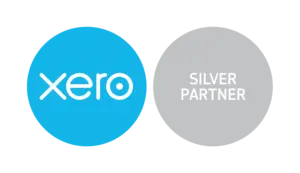If you’re a small or medium-sized business owner in the UK, then “Business Asset Disposal Relief” (formerly known as Entrepreneurs’ Relief) is something you absolutely need to know about.
It is one of the more favourable reliefs still available, although it has varied substantially over the last 20 years in both the amount of relief offered and the limit of gains it can apply to.
If you’re planning to sell all or part of your business, this relief could result in significant tax savings for you. Here’s what you need to know, in simple and actionable steps, to take full advantage of it.
What is Business Asset Disposal Relief?
Business Asset Disposal Relief (BADR) is a government scheme designed to reward entrepreneurs when they sell or dispose of business assets.
It reduces the amount of Capital Gains Tax (CGT) you pay when selling qualifying business assets, such as shares in a company.
Rather than paying the standard CGT rate of anywhere from 10% to 28% on your gains, BADR allows qualifying gains to be taxed at a flat rate of 10%.
Who Can Claim BADR?
To qualify for BADR, both you and your business must meet specific criteria:
The Individual:
- You must be a sole trader, business partner, or hold shares in a company where you’re an employee or officer (e.g. a director).
- You need to have owned the assets or shares for at least two years prior to the disposal.
Your Business or Shares:
- The business must be a “trading company” or part of a “trading group” during the qualifying period (i.e. not an investment company).
- If you’re selling shares, you must own at least 5% of the company’s shares and voting rights.
If the shares are from an Enterprise Management Incentive (EMI) Scheme:
You must have both:
- bought the shares after 5 April 2013
- been given the option to buy them at least 2 years before selling them.
What Qualifies for BADR?
BADR applies to various types of assets, including:
- Shares in a Trading Company: Provided you meet the ownership and role criteria.
- The Whole or Part of a Business: If you’re selling a sole proprietorship or partnership.
- Assets Used in Your Business: For example, property or equipment, provided these are sold as part of the business.
What Does Not Qualify for BADR?
- Investments and Non-Trading Companies: E.g. owning a property investment company, generating all of its income from property.
- Assets Not Used Wholly or Mainly for Business Purposes: Most business expenses normally have to fulfil the criteria of being “wholly, necessarily, and exclusively” for the purposes of the business.
- Rented Properties – Commercial or Residential Use: A buy-to-let (BTL) residential property rented to tenants doesn’t qualify unless part of a trading business, e.g. a B&B.
How Much Can You Claim?
- BADR allows you to claim relief on gains up to £1 million in your lifetime.
- This lifetime limit applies to the total of all qualifying disposals, so you need to keep a track of the cumulative total, and plan ahead if considering multiple disposals.
Common Scenarios Where BADR Applies
Below are a few real life examples:
- Selling Your Entire Business: If you’ve been running a cafe for over two years and decide to sell it, you could qualify for BADR on the gains from the sale.
- Exiting as a Shareholder: You’ve been a director and 10% shareholder in a tech company for five years. Upon selling your shares, BADR could significantly reduce the CGT owed.
- Selling Business Assets Separately: You close your business but sell the property and equipment separately. Provided these assets were used for trading purposes and meet the criteria, they may also qualify for BADR.
What Happens If You Don’t Qualify?
If you don’t meet the BADR criteria, your gains will be taxed at the standard CGT rates:
- 10% (from 6th April 2024) and 18% (from 30th October 2024) for basic-rate taxpayers.
- 20% (from 6th April 2024) and 24% (from 30th October 2024) for higher-rate taxpayers.
Given these significant differences, it’s important to plan ahead and structure your business in a way that qualifies for BADR upon any future sale.
How to Maximise Your Tax Efficiency
- Plan Ahead: To ensure you have owned the qualifying assets for at least 2 years before you are in a position to sell.
- Maintain Accurate Records: HMRC will want to see evidence that you meet the qualifying criteria. Keep detailed records about your role in the company, your ownership of the shares or assets, and also how they’ve been used.
- Work with Experts: Navigating tax relief can be tricky, because the ‘devil is in the details’, and the rules are often nuanced, requiring judgement. A Chartered Accountant can help ensure your disposal qualifies and that you are maximising the tax savings available.
Key Pitfalls to Avoid
BADR is valuable, but it’s easy to trip up on the rules. Common mistakes include:
- Failing the Two-Year Rule: Selling assets or shares too soon disqualifies you from relief.
- Misclassifying a Qualifying Asset: HMRC may reject the claim if they disagree with your determination of a qualifying asset.
- Misclassifying a Trading Company: If your business earns a substantial portion of income from investments, it may not qualify as a trading company.
- Ignoring the 5% Shareholding Rule: If you dilute your ownership below 5%, you risk losing eligibility.
FAQs About BADR
1. Can I claim BADR multiple times?
Yes, as long as you haven’t exceeded the £1 million lifetime limit. If you plan to make a sizeable business disposal or multiple business disposals, it’s important to keep a track of how much you have claimed, but also whether the limit has changed in the last Government Budget.
2. What if my business is part trading and part investment activities?
HMRC would apply the ‘20% test’, considering whether more than 20% of your income, assets, or time are involved in non-trading activities. This could include investments or earning rental income. If that is the case, then your company may not qualify for BADR.
3. Can I qualify for BADR if my business is operated through a trust?
Potentially. However, the rules for trusts are more complex. Beneficiaries must meet the same conditions as if they owned the assets directly, which includes being actively involved in the company and meeting the 2-year rule.
The trust itself must also meet specific criteria, such as being a qualifying interest in possession (IIP) trust. Trusts are a specialist field, so it’s worth consulting a professional.
4. What if I’m unsure whether my business qualifies for BADR?
That’s where RedBrick can help. As Chartered Accountants and Business Advisors we spend much of our time navigating rules and regulations, and interpreting guidelines and principles set by HMRC, so that we are in the best position to advise you.
Why Choose RedBrick for Your Tax Planning?
Tax reliefs like BADR aren’t just about ticking boxes; they’re about understanding the reasoning behind the rules. The ‘spirit’ of them, and the case law generated to date. At RedBrick, we pride ourselves on:
- Expert Guidance: We’ll help you understand and meet the criteria for BADR.
- Tailored Advice: Every business is unique, and so our approach is unique for each one.
- Peace of Mind: Rest easy knowing your finances are in safe, experienced hands, and that we apply our values to everything we do. We don’t just pay them lip service. This is why they are the first thing listed on our website.
Final Thoughts: A New Home For Your Business Finances?
BADR is one of the most valuable tools available to you, if you own a small business in the UK. However, like any powerful tool, it needs to be handled carefully.
With the right professional guidance, you can save thousands and protect the assets you have worked so hard to build.
We can help you on your journey, and guide you how to build and structure your business in the right way.
For a better home for your business finances, email us at hello@redbrickaccounting.comor contact us here.




